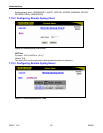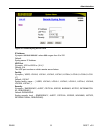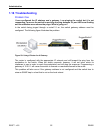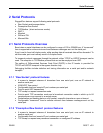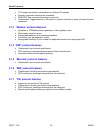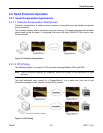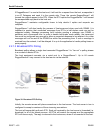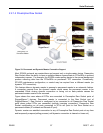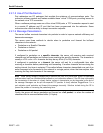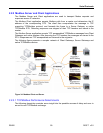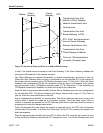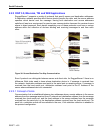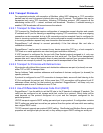
Serial Protocols
ROS™ v3.5 58 RS400
2.2.1.5 Use of Port Redirectors
Port redirectors are PC packages that emulate the existence of communications ports. The
redirector software creates and makes available these “virtual” COM ports, providing access to
the network via a TCP connection.
When a software package uses one of the virtual COM ports, a TCP connection request is sent
to a remote IP address and IP port that has been programmed into the redirector. Some
redirectors also offer the ability to accept connection requests.
2.2.1.6 Message Packetization
The server buffers received characters into packets in order to improve network efficiency and
demarcate messages.
The server uses three methods to decide when to packetize and forward the buffered
characters to the network:
• Packetize on a Specific Character
• Packetize on timeout
• Packetize on full packet.
If configured to packetize on a specific character, the server will examine each received
character and will packetize and forward upon receiving the specific character. The character is
usually a <CR> or an <LF> character but may be any 8 bits (0 to 255) character.
If configured to packetize on a timeout, the server will wait for a configurable time after
receiving a character before packetizing and forwarding. If another character arrives during the
waiting interval, the timer is restarted. This method allows characters transmitted as a part of an
entire message to be forwarded to the network in a single packet, when the timer expires after
receiving the very last character of the message.
Note: Some polling software packages which perform well over DOS have been known to experience
problems when used over Windows based software or port redirection software. If the OS does not expedite
the transmission of characters in a timely fashion, pauses in transmission can be interpreted as the end of
the message. Messages can be split into separate TCP packets. A locally attached RuggedServer
™
or a
port redirector could packetize and forward the message incorrectly. Solutions include tuning the OS to
prevent the problem or increasing the packetizing timer.
Finally, the server will always packetize and forward on a full packet, i.e. when the number of
characters fills its communications buffer (1K bytes).



